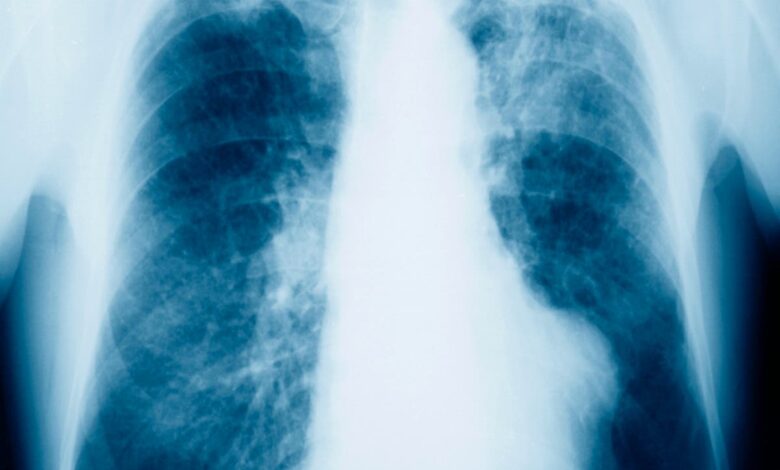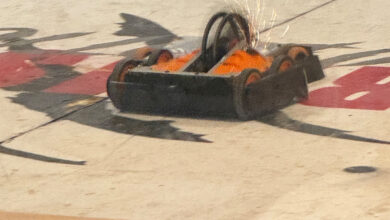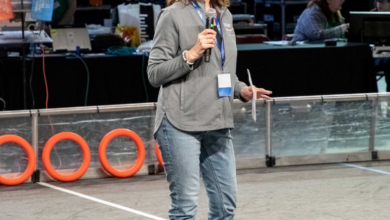Robotics could help cut NHS waiting lists, medics and experts say

Hospital waiting lists for cancer diagnoses and treatment could be “transformed” using robotics, experts and NHS medics have claimed.
Robots being trialled on lung cancer patients at top specialist hospital the Royal Brompton could halve the time it takes to diagnose and treat tumours, according to one of the medics leading the trial.
The technology provides a 3D road map of a patient’s lungs, from the mouth to the location of the cancer, and could help surgeons remove tumours in one sitting.
The method allows doctors to target and remove cancer nodules on the lung with millimetre precision.
Before the procedure, a CT scan is performed and passed through software to create a detailed 3D diagram of the inside of the patient’s lungs from the mouth to the location of the cancer.
A thin, robot-guided tube, or catheter, is then passed through the patient’s mouth and into the airways, following this road map.
Once located, cancer cells are destroyed using heat in a process known as microwave ablation which involves performing a CT scan on a patient to locate the cancer and inserting a needle through the skin and straight into the tumour.
According to the NHS, more than 43,000 people each year are diagnosed with lung cancer in the UK, with smoking accounting for about 70 per cent of cases.
The disease is more likely to be treated successfully if caught early.
Professor Pallav Shah, a consultant respiratory physician based at Royal Brompton Hospital in London, told the PA news agency that adopting these types of technologies by the NHS is “a complex situation”.
He added: “Robotics are going to be expensive, but if you look at the bigger picture you’re going to save time.
“If you look at the NHS overall, if we can diagnose these tumours early and treat them early, we’ll save an absolute fortune on chemotherapy and radiotherapy.”
According to Professor Shah the first patient to be treated using the technology already had lung cancer and had received chemotherapy and radiotherapy. However, she then developed a spot on her lungs.
He said: “She couldn’t have more radiotherapy and wasn’t eligible for surgery. We had to be millimetre precise – and we were. She’s now – over six months down the road – doing really well.”
The team has treated a further six patients since then.
The way ablation is currently done can result in multiple attempts, taking “well over an hour, maybe 90 minutes”, according to Professor Shah. It carries a risk of puncturing the lung.
The procedure now being trialled by the Royal Brompton team takes between 40 and 45 minutes, although the ablation stage only takes three minutes.
Navigational bronchoscopy – when a narrow tube is passed through the mouth into the airways, allowing doctors to examine nodules – is successful in identifying lung cancer about 65 per cent of the time.
However, introducing robotics increases the success rate “dramatically”, bringing it “close to 95 per cent”, according to Professor Shah.
He told PA there is “a lot of work to be done, but a lot of early promise” and in the future, he would like to see the diagnosis and treatment of lung cancer in the same sitting.
The trial aims to treat 32 lung cancer patients who are not fit or eligible for surgery to determine the safety of the procedure and the recurrence rate of cancer.
The next step will be a trial that uses the method on patients who are eligible for surgery.
One of the biggest comparisons of the new method’s safety will be radiotherapy, which works by using radiation to kill cancer cells but has a number of side effects.
One such side effect is pneumonitis – or inflammation of the lung – which Prof Shah said can be “very unpredictable and can lead to profound damage and breathlessness”.
Last June, NHS England announced it would be rolling out its targeted lung health check programme (TLHC) with the aim of detecting the disease early and before any symptoms.
Those eligible for screening are people aged between 55 and 74 who are current or former smokers.
Creo Medical is a medical device developer which designed the microwave ablation tool used in the procedure.
The company’s chief executive, Craig Gulliford, said: “Combining diagnosis and treatment in one procedure could potentially be transformational – this reduces the need for the patient to return for a separate, more invasive procedure, which is the current standard of care.
“By removing the gap between diagnosis and treatment, it eliminates the long anxious wait for potential treatment that patients currently have to go through, but it also means that patients can get treatment before a nodule has time to grow in size or spread to other parts of the body.
He added that the adoption of technology in this way “could be of great benefit” when it comes to bringing down NHS waiting lists.



